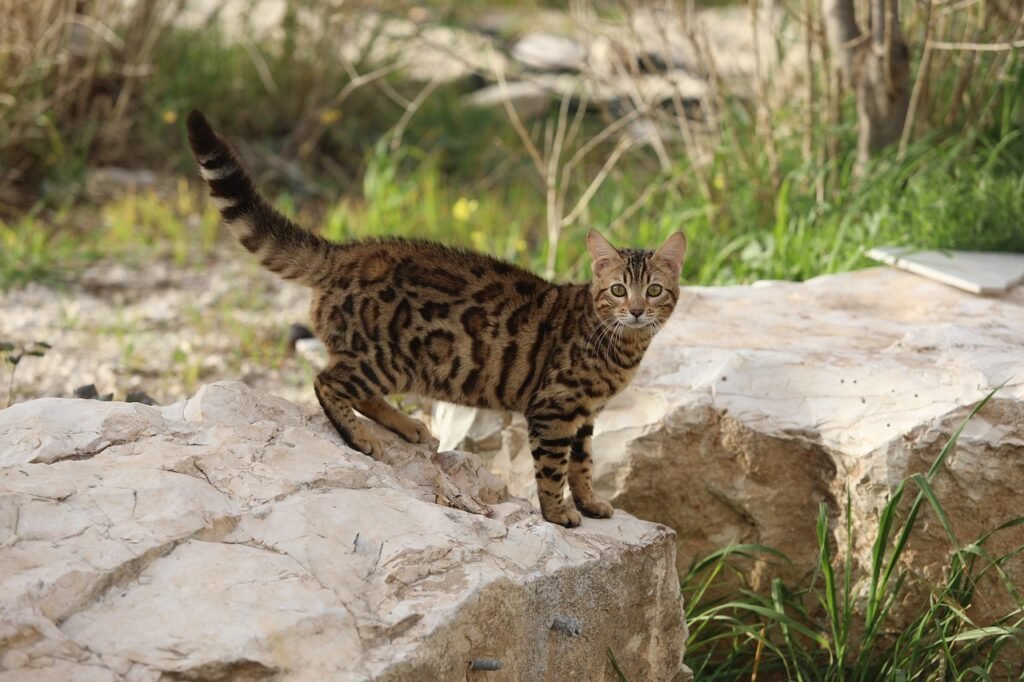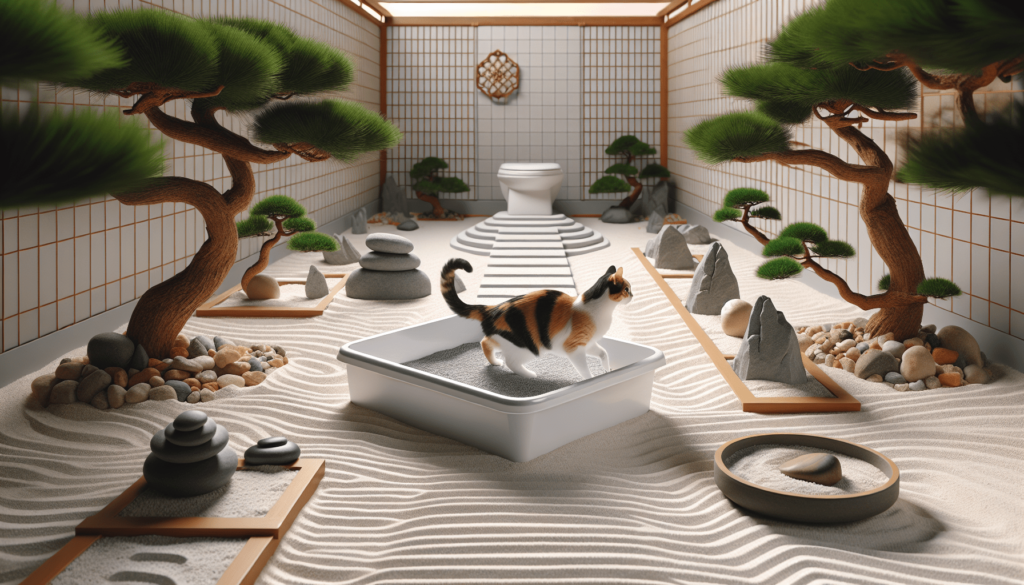Have you ever walked into your living room, only to be greeted by an unpleasant surprise on the floor? Dealing with a cat that consistently poops outside the litter box can be frustrating and messy. In this article, you will discover effective strategies and tips on how to stop a cat from pooping on the floor. By understanding the reasons behind this behavior and implementing simple changes, you can restore harmony in your home and ensure your furry friend uses the litter box as intended.

Understanding why cats poop on the floor
Cats pooping on the floor can be a frustrating and unpleasant issue for cat owners. However, before we can address this problem, it is essential to understand the potential triggers that may lead to this behavior. Identifying the underlying causes is crucial in finding an effective solution.
Identifying potential triggers
There can be various triggers that prompt a cat to poop on the floor. It could be due to behavioral issues, medical reasons, or even problems with the litter box. By observing your cat’s behavior and environment, you can start unraveling the possible reasons behind this unwanted behavior.
Behavioral issues contributing to the problem
Behavioral issues can play a significant role in cats pooping on the floor. Stress, anxiety, territorial disputes, or even changes in the household routine can disrupt your cat’s litter box habits. It is essential to understand your cat’s behavior and identify any changes that may have triggered this behavior.
Medical reasons why cats may poop on the floor
Sometimes, cats may poop on the floor due to an underlying medical condition. Health problems such as digestive disorders, urinary tract infections, or even arthritis can make it difficult for cats to reach their litter box in time. It is crucial to rule out any medical conditions by consulting with a veterinarian.
Doing a medical check
To address the issue of a cat pooping on the floor, it is crucial to rule out any potential health problems. Consulting with a vet can help identify and treat any underlying medical conditions that may be causing this behavior.
Consulting with a vet to rule out health problems
By scheduling a visit with your veterinarian, you can discuss your cat’s behavior and any potential health concerns that may be contributing to the issue. Your vet will conduct a thorough examination to determine if there are any underlying medical conditions causing your cat to poop on the floor.
Potential illnesses that cause cats to poop outside the litter box
Various medical conditions can lead to cats pooping outside the litter box. These may include gastrointestinal issues, urinary tract infections, inflammatory bowel disease, or even diabetes. Your vet will be able to perform tests and screenings to pinpoint the exact cause of your cat’s behavior.
Treatments or medications that might help
Once a medical condition has been identified, your veterinarian will recommend appropriate treatments or medications to address the health issue. Treating the underlying medical problem can often result in your cat returning to using the litter box appropriately.
Assessing your litter box
A cat’s litter box plays a significant role in their toileting habits. By examining the current state of your litter box and making necessary improvements, you can encourage your cat to use it consistently.
Proper placement of the litter box
The location of the litter box is essential for a cat’s comfort and convenience. It should be placed in a quiet and easily accessible area away from high foot traffic or noisy appliances. Cats appreciate privacy when using the litter box, so finding a secluded spot can help promote their regular use.
Choosing the right size of litter box
The size and dimensions of the litter box also matter. It should be spacious enough for your cat to comfortably move and turn around inside. If your cat feels cramped or restricted inside the litter box, they may be inclined to find alternative places to relieve themselves.
Determining whether the litter box is clean enough
A crucial factor in ensuring litter box usage is maintaining cleanliness. Cats are naturally clean animals and may avoid using a dirty litter box. Regularly scoop and remove waste, and consider a complete litter change at least once a week. This will help create a pleasant and inviting environment for your cat.
Assessing whether your cat likes their litter material
Cats can have preferences when it comes to litter material. Some may prefer clumping clay litter, while others may favor unscented or natural alternatives like crystal litter or recycled paper pellets. Experimenting with different types of litter can help determine what your cat finds most comfortable and appealing.
Trying different types of litter
If your cat continues to poop on the floor despite addressing behavioral and medical factors, it may be helpful to try different litter options. Cats can be selective about the texture, scent, or composition of their litter. Exploring a range of options may assist in finding the right fit for your cat’s preferences.
Holistic options for cat litter
Holistic cat litters offer natural alternatives that can be more pleasing to some cats. Materials such as corn, wheat, wood, or even recycled newspaper can provide a different texture and scent that your cat may find more appealing. These options are also environmentally friendly.
Traditional litter variants
Traditional clumping clay litters are widely available and have been proven successful for many cats. They offer excellent odor control and are easy to clean. Silica gel-based litters are another popular option, as they are highly absorbent and reduce odors effectively.
Understanding what your cat prefers
Observe your cat’s behavior when introducing new litter materials. Some cats may immediately show a preference, while others may require more time to adjust. By paying attention to their reactions, you can better understand their preferences and select the litter that they are most comfortable using.

Using litter attractants
Litter attractants can be a useful tool in encouraging your cat to use their litter box consistently. These products help draw your cat’s attention to the designated toileting area and reinforce positive behavior.
Understanding what litter attractants are
Litter attractants are substances that emit an appealing scent to cats, drawing them to their litter box. These substances often mimic the scent of cat urine or feces, signaling to your cat that the litter box is the appropriate place for elimination.
How to properly use litter attractants
Litter attractants come in various forms, including sprays, powders, or even litter additives. Follow the product instructions when applying them to ensure maximum effectiveness. It is crucial to use attractants consistently and in conjunction with other litter box management strategies.
Determining its effectiveness
While litter attractants can be helpful, their effectiveness may vary depending on the individual cat. Some cats may respond positively to the scent, while others may not show much interest. Monitor your cat’s behavior and adjust your approach accordingly if the attractants do not yield the desired results.
Multiple cats, multiple litter boxes
In households with multiple cats, providing adequate litter boxes is essential. This helps alleviate any potential territorial issues and ensures that each cat has access to a clean and desirable toileting area.
Knowing the correct litter box to cat ratio
The general rule of thumb for multi-cat households is to have one litter box per cat, plus an extra box. This allows each cat to have their designated area and prevents competition or dominance issues. Providing ample litter boxes decreases the likelihood of cats pooping outside the box.
Placement strategies for multiple litter boxes
Strategic placement of the litter boxes is crucial in a multi-cat household. Distribute the litter boxes throughout the house, ensuring they are easily accessible and located in quieter areas. This helps prevent overcrowding and reduces any potential stress or conflicts between cats.
Addressing dominance issues revolving around litter boxes in a multi-cat household
Dominance issues can arise when multiple cats share a litter box. Some cats may guard or intimidate others, which can discourage certain cats from using the litter box altogether. By providing enough litter boxes and strategically placing them, you can minimize dominance-related problems and promote harmony.

Re-training your cat
In some cases, re-training your cat to use the litter box may be necessary. By establishing pleasurable associations, gradually reintroducing the litter box, and being persistent and patient, you can help your cat develop appropriate toileting habits.
Pleasurable Associations with Litter Box
Encourage positive associations with the litter box by placing treats, toys, or comfortable bedding nearby. Create a positive environment where your cat feels safe and relaxed while using the litter box. Reinforcing positive behavior through rewards can help your cat re-establish a positive relationship with the litter box.
Gradual Introduction or Re-Introduction to Litter Box
If your cat has developed a negative association with the litter box, it may be helpful to reintroduce it gradually. Start by placing their litter box in a confined space, gradually expanding the area as they become more comfortable. This controlled exposure can help reduce any anxiety or fear associated with the litter box.
Persistence and patience in cat training
It is important to understand that re-training may take time and patience. Cats are creatures of habit, and breaking established patterns can be challenging. Show persistence and consistency in establishing the desired behavior, and offer praise and rewards whenever your cat uses the litter box correctly.
Using cat diapers
In certain situations where other methods have failed, the use of cat diapers can be a temporary solution. Cat diapers help prevent accidents and protect your home while you work on resolving the underlying causes of the inappropriate pooping behavior.
Understanding the purpose and use of cat diapers
Cat diapers are specially designed garments that can be worn by cats to contain waste. They are typically made of absorbent materials to ensure maximum comfort for your cat. Cat diapers should only be used as a temporary measure while other strategies are implemented to address the issue.
Choosing the right size and type of cat diaper
Proper sizing is essential when selecting cat diapers. Measure your cat’s waist and choose a diaper that fits snugly but comfortably. It is also important to choose a diaper type that suits your cat’s needs, whether it be washable or disposable, based on your preferences and convenience.
Training your cat to accept wearing diapers
Introducing your cat to diapers requires patience and positive reinforcement. Start by allowing your cat to sniff and explore the diaper before gently securing it around their waist. Gradually increase the duration of wear, offering rewards and praise for positive behavior. With time, most cats can adjust to wearing diapers without distress.
Dealing with behavioral issues
Behavioral problems can often contribute to inappropriate toileting behavior in cats. Addressing anxiety, stress, or other underlying causes is crucial in tackling the root of the issue.
Identifying symptoms of behavioral problems
Behavioral problems can manifest in various ways, such as aggression, excessive grooming, or changes in eating or sleeping patterns. Pay attention to any signs of stress or anxiety that your cat may be exhibiting. Identifying these symptoms can help determine the appropriate course of action.
Techniques to address anxiety and stress in cats
Creating a calm and secure environment is important in managing anxiety and stress in cats. Provide hiding spots, vertical spaces, and engaging toys to help alleviate stress. Calming pheromone diffusers or supplements may also be beneficial. Fostering a routine and offering reassurance can go a long way in minimizing anxiety-related issues.
When to consult a pet behaviorist
If behavioral problems persist despite your efforts, it may be necessary to seek professional help from a pet behaviorist. These experts specialize in identifying and addressing behavioral issues in pets. They can provide customized strategies and guidance to help modify your cat’s behavior effectively.
Cleaning and dealing with accidents
Accidents are bound to happen during the process of addressing the issue of a cat pooping on the floor. Proper and effective cleaning methods are crucial in removing odors and preventing your cat from revisiting the soiled area.
Effective methods for cleaning cat poop
Cleaning cat poop promptly is essential in minimizing odors and preventing your cat from considering the area as an appropriate toileting spot. Wear gloves and use a scooper to remove solid waste, then clean the soiled area with an enzyme cleaner specifically designed for pet messes.
Using enzyme cleaners to remove odors
Enzyme cleaners are effective in breaking down the organic compounds in cat feces and eliminating odor. These cleaners work by neutralizing the scent, discouraging your cat from returning to the same spot. Follow the product instructions carefully and ensure thorough cleaning to prevent lingering odors.
Addressing the situation without punishing the cat
It is important to remember not to punish your cat for their inappropriate pooping behavior. Cats do not respond well to punishment and may become fearful or anxious, exacerbating the problem. Instead, focus on implementing positive reinforcement techniques and addressing the underlying causes of the behavior.
By understanding the potential triggers, addressing any medical issues, optimizing the litter box, and employing positive reinforcement techniques, you can successfully stop your cat from pooping on the floor. Remember, it may take time and patience, but with consistency and proper care, you can help your cat establish proper toileting habits and create a harmonious environment for both of you.

